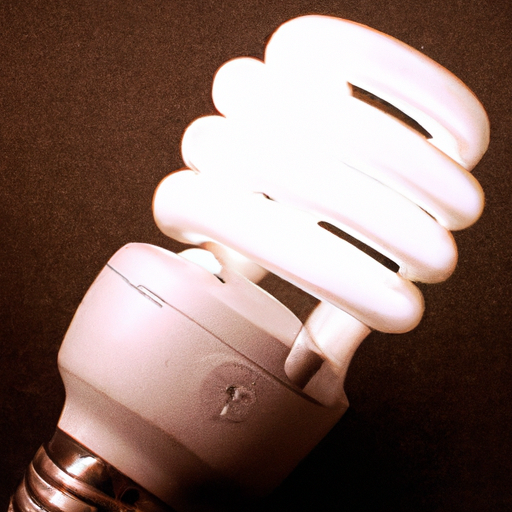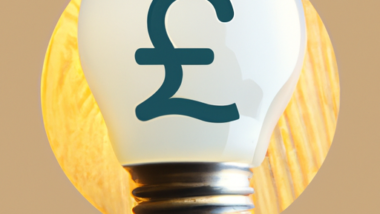Are you looking for a simple and effective way to reduce your electricity costs while also contributing to a greener environment? Look no further than energy-saving light bulbs. These innovative bulbs not only provide the same brightness and quality of traditional bulbs, but they also consume significantly less energy, which can result in substantial savings on your monthly electricity bills. By switching to energy-saving light bulbs, you can not only enjoy a brighter and more energy-efficient home, but also do your part in reducing your carbon footprint.
Longer Lifespan
Increased Longevity
Energy-saving light bulbs have a significantly longer lifespan compared to traditional incandescent bulbs. While incandescent bulbs typically last around 1,000 hours, energy-saving bulbs can last as long as 25,000 hours or more. This increased longevity means fewer bulb replacements, resulting in significant cost savings and less hassle for you.
Reduced Replacement Costs
With the longer lifespan of energy-saving light bulbs, you won’t have to constantly purchase and replace bulbs as frequently as with traditional bulbs. This not only saves you money on replacement costs but also reduces the amount of waste generated from discarded bulbs. By investing in energy-saving bulbs, you’re making a more sustainable choice and contributing to a greener environment.
Energy Efficiency
Lower Energy Consumption
One of the most notable benefits of energy-saving light bulbs is their lower energy consumption. Compared to incandescent bulbs, energy-saving bulbs can use up to 80% less energy. This means that the same level of brightness can be achieved while consuming far less electricity. By using energy-efficient bulbs, you can significantly reduce your household’s energy consumption and help conserve valuable resources.
Reduced Electricity Bills
Lower energy consumption directly translates to reduced electricity bills. By replacing traditional bulbs with energy-saving alternatives, you can potentially save a significant amount on your monthly energy expenses. Not only does this benefit your wallet, but it also reduces the strain on power grids and leads to a more sustainable energy future.
Environmental Impact
Reduced CO2 Emissions
Energy-saving light bulbs play a crucial role in reducing CO2 emissions. Since these bulbs require less electricity to operate, the demand for power from fossil fuel-based power plants decreases. As a result, the overall carbon footprint associated with electricity generation is reduced. By actively choosing energy-efficient lighting options, you are contributing to the fight against climate change and supporting a cleaner, healthier planet.
Decreased Use of Non-Renewable Resources
Traditional incandescent bulbs waste a significant amount of energy as heat, which results in higher energy consumption. This energy consumption, in turn, requires more non-renewable resources such as coal, oil, and natural gas for electricity generation. Energy-saving bulbs, on the other hand, convert a higher percentage of energy into light, minimizing the need for non-renewable resources. By using energy-saving bulbs, you are helping to preserve these valuable resources for future generations.
Improved Safety
Lower Heat Emission
Energy-saving light bulbs emit significantly less heat compared to traditional incandescent bulbs. This reduced heat emission minimizes the risk of burns or other fire hazards, making energy-saving bulbs a safer option for use in homes, offices, and other spaces. You can confidently install energy-efficient bulbs without worrying about accidental contact with hot surfaces.
Decreased Fire Risk
The lower heat emission of energy-saving bulbs also reduces the risk of fires. Traditional incandescent bulbs can get extremely hot during operation, increasing the risk of igniting nearby flammable materials such as curtains or paper. Energy-saving bulbs, on the other hand, generate less heat, significantly reducing the chances of a fire starting. By choosing energy-efficient lighting options, you are prioritizing the safety of your home or workplace.
Versatility
Wide Range of Options
Energy-saving light bulbs come in a wide range of options to suit various fixtures and lighting needs. Whether you need bulbs for lamps, ceiling fixtures, or outdoor lighting, there is an energy-saving alternative available. You can easily find bulbs in different shapes, sizes, and wattages to perfectly fit your existing fixtures and achieve the desired lighting ambiance.
Compatibility with Different Fixtures
Energy-saving bulbs are designed to be compatible with a variety of fixtures, ensuring seamless integration into your lighting setup. Whether you have recessed lighting, track lighting, or pendant fixtures, there is an energy-saving bulb that can fit and function properly. This versatility allows you to upgrade your lighting system to energy-efficient options without having to replace your entire set of fixtures.
Quality of Light
Better Light Output
Energy-saving bulbs provide better light output compared to traditional incandescent bulbs. They produce a higher quality of light, resulting in improved visibility and enhanced visual comfort. Energy-saving bulbs use advanced technologies such as Light Emitting Diodes (LEDs) or Compact Fluorescent Lamps (CFLs) to deliver brighter and more consistent illumination. This higher quality of light enhances your overall lighting experience.
Enhanced Color Rendering
Energy-saving bulbs also offer improved color rendering, allowing you to see colors more accurately and vividly. Traditional incandescent bulbs often have a warm or yellowish hue, which can distort colors. Energy-saving alternatives, on the other hand, provide a more natural and true-to-life color representation. Whether you’re reading, cooking, or working on a project, energy-saving bulbs ensure that you perceive colors as they are meant to be seen.
Instant On/Off
Flicker-Free Illumination
Energy-saving bulbs offer instant, flicker-free illumination. Unlike traditional bulbs that may take a few moments to reach their full brightness, energy-saving options turn on instantly, providing immediate illumination. This feature is especially useful in areas where quick and reliable lighting is required, such as staircases, hallways, or outdoor spaces. With energy-saving bulbs, you can enjoy consistent and reliable lighting without any delays or flickering.
No Warm-Up Time
Traditional incandescent bulbs require a warm-up period to reach their optimal brightness. This warm-up time can be inconvenient, especially when you need immediate and full lighting capacity. Energy-saving bulbs eliminate the need for warm-up time, instantly providing their full brightness as soon as you switch them on. You no longer have to wait for the bulbs to reach their maximum output, allowing you to have instant illumination whenever you need it.
Dimmable Options
Customizable Lighting Intensity
Energy-saving bulbs offer dimmable options, allowing you to customize the lighting intensity to suit your preferences or specific needs. With dimmable bulbs, you have the flexibility to create different lighting atmospheres for various activities. Whether you want a bright, focused light for reading or a soft, cozy ambiance for relaxation, energy-saving dimmable bulbs enable you to achieve the desired lighting effect.
Mood Setting Capabilities
By using dimmable energy-saving bulbs, you can easily set the mood in any room. Whether you’re hosting a dinner party, enjoying movie night, or creating a relaxing environment for meditation, adjusting the light intensity can enhance the desired ambiance. Dimmable bulbs give you control over the lighting atmosphere, allowing you to create the perfect setting for any occasion.
Availability and Affordability
Increasing Accessibility
Energy-saving light bulbs are becoming increasingly accessible in the market. As awareness of their benefits grows, more manufacturers are producing energy-saving options in various styles and wattages. This increased availability makes it easier for consumers to find and purchase energy-saving bulbs for their lighting needs. You can conveniently find these bulbs at local hardware stores, lighting specialty stores, and even online retailers.
Favorable Prices
While energy-saving bulbs may have been relatively expensive in the past, their prices have significantly decreased over the years. With increased competition and advancements in technology, energy-saving options are now much more affordable for consumers. The initial investment in energy-saving bulbs is often recouped through energy cost savings and the extended lifespan of the bulbs, making them a cost-effective choice in the long run.
Potential Energy Cost Reduction
Calculation Factors
The potential energy cost reduction from using energy-saving bulbs depends on several factors, including the number and wattage of the bulbs, the average daily usage, and the electricity rates in your area. By multiplying the wattage savings per bulb by the number of bulbs in use, you can estimate the total wattage reduction. This reduction can then be converted into kilowatt-hours (kWh) by dividing the total wattage reduction by 1,000. Multiplying the kWh saved per year by your electricity rate will give you an estimate of the potential annual cost savings.
Estimated Savings
While the exact energy cost reduction may vary depending on individual circumstances, the potential savings from using energy-saving light bulbs can be significant. On average, households can save anywhere from $30 to $80 per year by replacing traditional bulbs with energy-saving alternatives. Over the lifespan of a single energy-saving bulb, the savings can reach several hundred dollars. By making the switch to energy-efficient lighting, you can not only reduce your electricity costs but also contribute to a greener, more sustainable future.
In conclusion, the benefits of using energy-saving light bulbs are numerous. From longer lifespan and reduced replacement costs to lower energy consumption and decreased electricity bills, energy-saving bulbs offer significant advantages over traditional incandescent bulbs. They also have a positive environmental impact by reducing CO2 emissions and the use of non-renewable resources. Additionally, energy-saving bulbs provide improved safety, versatility, quality of light, instant on/off functionality, and dimmable options. With increasing accessibility and affordability, adopting energy-saving lighting solutions is a wise choice for both your wallet and the planet. By considering the potential energy cost reduction and estimated savings, it becomes clear that investing in energy-saving bulbs is a smart long-term decision. Make the switch today and enjoy the benefits of energy-efficient lighting in your home or workplace.


